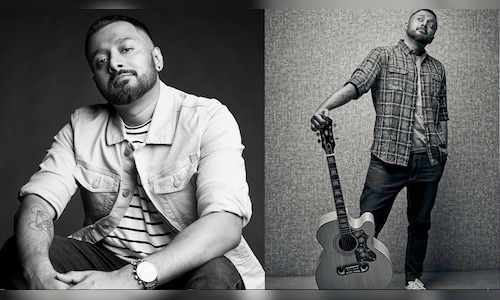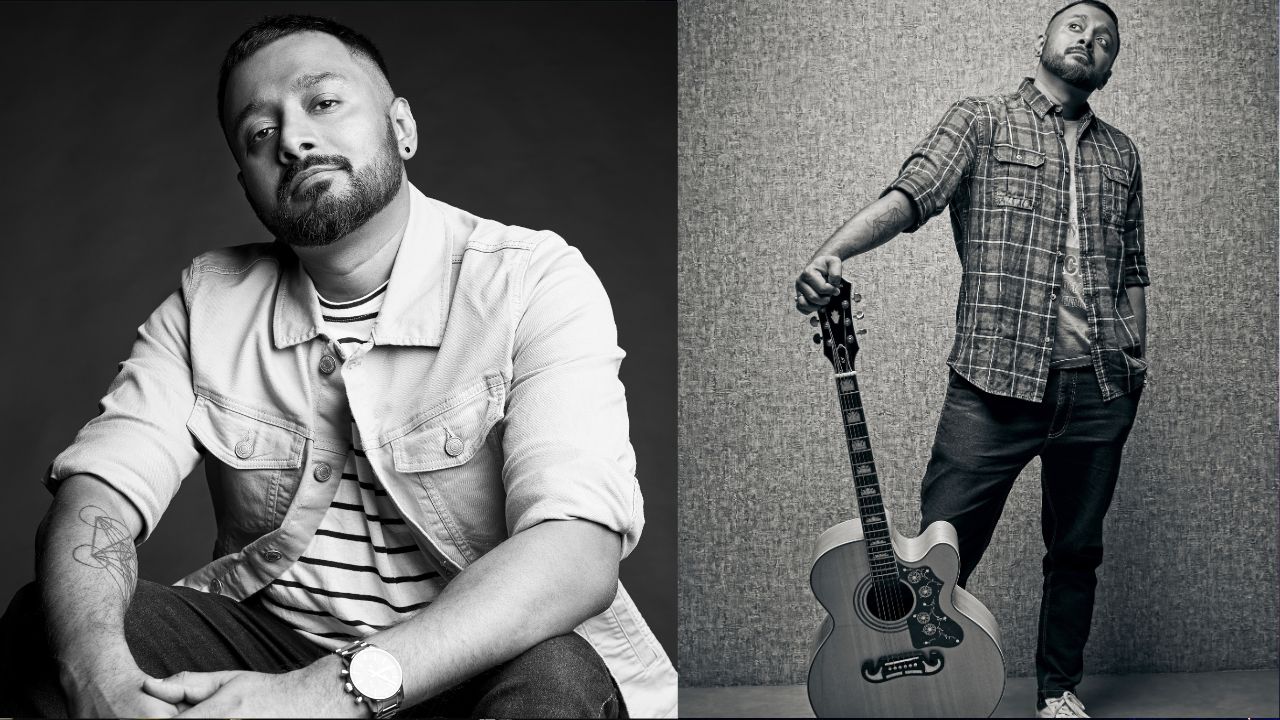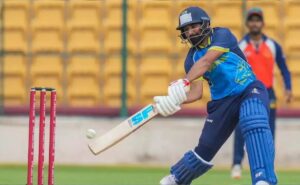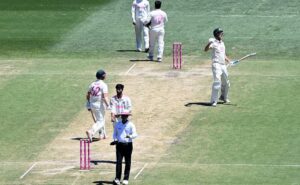

I sat down with Bhaskar or AB, as he is fondly called, for a freewheeling chat where we discussed the current state of Indie music, how artists are being discovered, the upswing in the Indie audience, the impact of international acts coming to India, the economics of music and more.
Here are the edited excerpts of the chat:
Q: How exactly would you describe your music in terms of a genre or type?
AB: I’m not restricted to a single genre. My work scope is divided into three categories —Firstly, I’m a composer for films and web series. Secondly, I’m a playback singer for hire for other composers and music directors. I don’t conform to a particular genre as I’m required to compose across genres like pop, hip-hop, rock, jazz, Indian et al. The third category is my band, Anand Bhaskar Collective, a blend of pop rock and Hindi rock, along with elements from other genres.
Q: Have you signed up with any label? Is there any particular label that represents you as an artist?
AB: As a band, we are represented by Shark & Ink, who help us with handling everything from our day-to-day affairs to social media to bookings and inquiries to number crunching. My solo work is managed by Media Advantage. They also have a legal team, which takes care of my contracts, negotiations and others.
Q: What are your main influences? What kind of music has influenced you and your work?
AB: There’s a range of influences; I primarily consume rock music as a listener and I’m hugely influenced by bands like Pearl Jam, Alice in Chains, Alter Bridge, Architect, Lamb of God, Iron Maiden and Metallica. In pop, Michael Jackson and Bruno Mars have inspired me a lot.
In India, I’m inspired by a lot of people. I am a huge Vishal Dadlani fan and feel he’s indie and commercial at the same time. He understands and knows how to navigate both of them smoothly. I feel like I’m kind of walking in his footsteps. He had a rock band called Pentagram and he also does a lot of commercial music and he also is part of shows like Indian Idol. I’m also hugely inspired by AR Rahman. The world can say what it wants, but the man is an absolute genius. I also love Amit Trivedi, with whom I’ve worked as a vocalist. I feel like he starts thinking where other people stop. Like all his compositions are so musically unique that it’s very hard to stay consistent like that.
Q: Any 5 indie artists that you would like to recommend for us and our readers?
AB: I would definitely recommend fellow bands like Parvaaz, As We Keep Searching, Swarathma, Vidhya Gopal, and Anushka Manchanda.
Q: Talking about the contemporary music scene in India, is there anything — any three, four or five things you want to change about the if you had the ability?
AB: If I had the ability to—that’s the disclaimer—and good that you gave me. If I had the ability to change something about the contemporary music scene in India, I would change the attitude towards the discovery of music — from a legal and management point of view, because a lot of people have to work really hard for nearly a decade to be even recognised. They need to go down the ‘covers path’ and post three to four covers a day till they have around 1 lakh followers on social media and then get picked up by a label. I would like to revert to the attitude that a label had before — like several decades ago —when your sheer talent would get you picked up and then the label would work with the artist to develop the repertoire of songs and position them a certain way.
What labels now do is find somebody already social media famous, take them and take their songs and mould them into what’s already working, in such a way that you can’t tell one song from another. These days no one is focusing on developing a unique sound which is very particular to the artist. If I were running a label on the side right now, I would shortlist artists purely based on talent and figure out what I can do to make them work, as opposed to what’s the norm today.
Also, there’s a whole volume game where labels are releasing 10 songs a day to capitalise on streaming revenues. I get the business side of it, but it’s completely damaging the music industry to the point where streaming revenues will keep going down, and artists will solely have to depend on live shows, as opposed to royalties that used to be given to singer-songwriters back in the day. Everybody just wants to release in volume. When there’s volume, there’s no quality and you will find so many songs coming out every day, resulting in music becoming a background process. With playlisting, you’re listening to different songs in the same genre but it doesn’t motivate you enough to check out who the artist is or their entire album. As opposed to earlier when we used to wait for artists to release their albums so that we could go buy them, during the cassettes and CDs era. These are some things I would like to change.
Q: How do you think the indie scene is right now in terms of footfalls and monetisation?
AB: In the last five years, most of the breakout hits have been non-Bollywood songs. For example, Maan Meri Jaan by King, Big Dawgs by Hanumankind, Cold/Mess by Prateek Kuhad, Kahe Kahe by Yellow Diary and even songs by Anuv Jain. These songs surpassed numbers that are usually clocked by Bollywood songs, which means the indie scene is doing something unique and worthwhile. It is because of things like these, a lot of people are now breaking out of that rut of the same composers and singers singing Bollywood songs.
Of course, Bollywood is still pretty dominant as it reaches places where indie music cannot as of now, and that also translates to footfalls. Pre-lockdown, we would play to a crowd of like 100-150 people. Now, all of our shows are sold out. All of our recent shows, at clubs and venues, have been sold out. This is because people are now breaking out of that whole rut of music that’s hyper-marketed to them. There has been quite an upswing in the indie music scenario where a lot of artists are getting a lot of recognition. I feel that there’s a huge swing in the way people consume music, and people are consuming more and more indie music, resulting in a higher footfall at shows by such artists.
Q: When it comes to monetisation, how much can an indie band expect from a show? In a city like Delhi or Mumbai or Bengaluru? Any ballpark figure you could give us?
AB: It really depends on the footfall, which depends on the ‘social footfall‘ of the artist. When I say social footfall, I don’t necessarily mean Instagram, Facebook etc. It also depends on monthly streaming numbers on YouTube or Spotify and the community of faithful listeners that they’ve built who will show up every time.
I am not the right person to comment on how much money they make, but I’m really sure that they make good money. It is probably not as much as a Bollywood playback singer, but it’s a good figure and I feel that they have started to get their dues now.
Q: Which city responds better to your music? Delhi, Mumbai, Pune, Bengaluru, Hyderabad or any other one?
AB: It hands down Mumbai! Mumbai is our own city. Every time we have played in Mumbai, I’ve had a hard time singing the songs because the audience is singing along loudly. They know every word, of every song, all the breaks and know exactly what is going to happen next. It has driven us to the point that we have to constantly reinvent our setlist so that they don’t get bored. Next is Bengaluru. We have also had a lot of success in the East, like Kolkata, which I feel is more rock-friendly. Also, our performance in Assam was well-received, where we got many followers and saw a jump in our listener base.
Q: Have you explored Shillong?
AB: No, that’s something that we’ve been wanting to do. And hopefully this year, we will go to Shillong.
Q: With foreign artists coming, the Indian live music scene is opening up and growing. Do you think this has helped smaller bands or is it just the big players that are capitalising? Are smaller artists getting a boost? Or is it just the big artists who are making the most of it?
AB: I feel like the international artists coming to India don’t quite affect how smaller, independent artists function, make money or perform. Maybe that’s just me. The economics of getting a Coldplay to India and having a local Indie play at the club are vastly different —the scale itself is way bigger than what you can imagine. I feel like there is no connection there. Having said that, I think with more international acts coming to India, the audience’s attitude is bound to change — because they are now not restricted to just film music and watching film music live. They are now getting this exposure to these different sounding artists and different genres of music, which I think will be helpful.
I also don’t think opening for an international artist is going to do much for an indie band. When people go to a festival, they don’t care about the opening artist. Like 9 out of 10 times, people forget who opened for the main act and that doesn’t quite translate to the success of the smaller artist.
Also Read: A lot of international bands are now taking India seriously: Independence Rock Founder Farhad Wadia
Q: How did you land the Mirzapur gig? Secondly, are you getting any interest from Bollywood?
AB: I got the Mirzapur gig because somebody at Excel Entertainment (producer) heard my independent music with Anand Bhaskar Collective and thought that I would be able to ‘do justice to the world of that series’. Somebody at Excel recommended me and then they reached out to me and that’s how I got it. For me, it was something that I had never done. I explored Sufi rock, Bhojpuri and Punjabi elements and that was a learning experience.
As far as Bollywood is concerned, I have done a bunch of films as a composer. I have also scored two films —Thai Massage on Netflix, and there’s another film called Rat on a Highway, starring Randeep Hooda. I’m not sure when it’s going to be released.
There is interest from Bollywood studios, but I feel I’m still a mid-range composer. It’s probably going to take me time to reach a place where people can just call me and say, ‘I want you’. Maybe with a few more releases under my belt, I should be able to reach a place where people would confidently place their trust in me and say ‘Yeah, you are who we want’.



